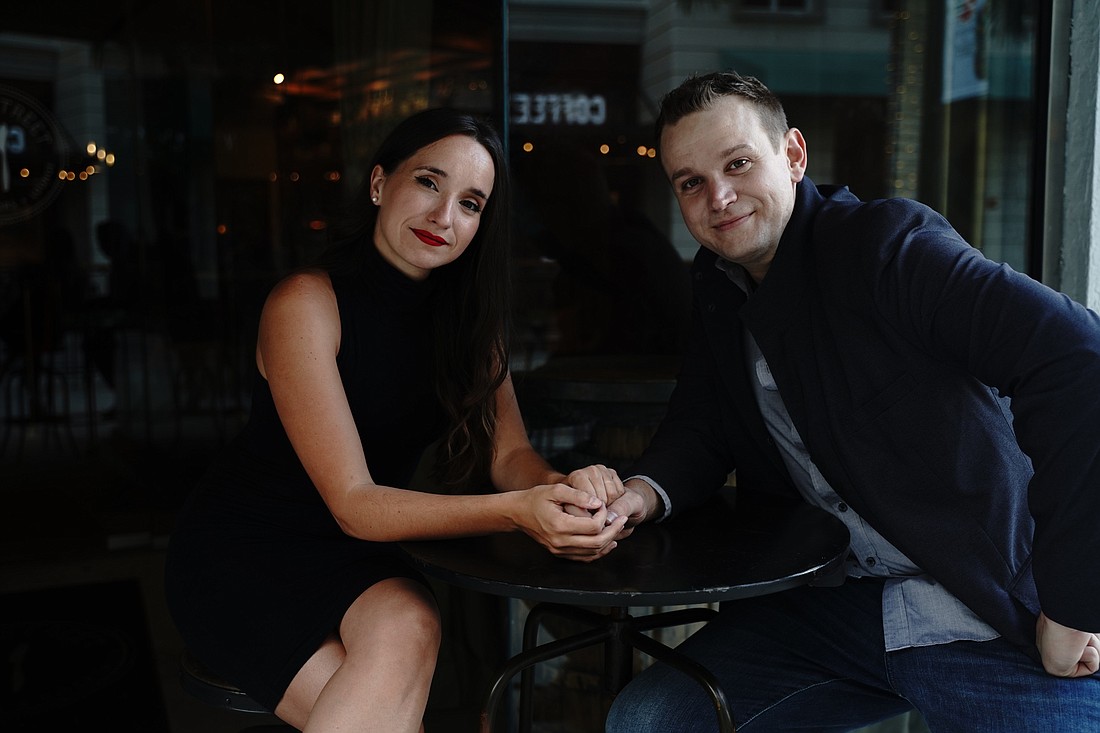- April 25, 2024
-
-
Loading

Loading

If you need an escape from the dystopian reality of the present, Brendan Ragan’s immersive “Safe House” offers an interlude of dystopian fiction at Urbanite Theatre. It’s a 40-minute immersive play, limited to socially distanced audiences of four. There are no live actors, except for the audience. You’re not passively watching this play; you’re in it. Ragan is both the director and playwright, and that’s the heart of his concept.
In the play’s conceit, you stumble into a “Safe House” designed by a programmer who’s on the run from the clutches of the Quandry Corporation. This corporate behemoth shares a business model with Dave Eggers’ “The Circle” and, for that matter, 90% of the multinational entities in cyberpunk fiction. Its business model is a mash-up of Facebook, Google and the phone company. It offers free service in exchange for mining your data and manipulating you. (Which real-world corporations do anyway.)
Fletcher (Chris Hayhurst) is the play’s hero (or villain). He designed Quandry’s system architecture, but crashed the system when (a) the corporate overlords turned it to evil or (b) he fell into a paranoiac delusion. Ava (Krystal Millie Valdes) is the play’s heroine (or villain). Quandry possibly kidnapped her when it found out Ava was collaborating with Fletcher to unplug its corporate brain. Either that, or she’s helping the corporation find and neutralize Fletcher. Or all or none of the above.
To find out the truth, you navigate the twists and turns of the titular Safe House. Fletcher has fled, but pops up periodically on various screens to guide you. Ava pops up, too. Their contradictory advice helps you navigate the breadcrumbs of clues (or misinformation) they’ve left behind. But one or both might be unreliable narrators. Finding the truth is more than ratiocination; it’s really a question of character. Who do you choose to believe — if anybody? Depending on your choice, there are two possible endings.
Hayhurst and Valdes put in nuanced performances. They’re hard to read by design. They don’t telegraph either heroism or villainy and keep you guessing until the end.
Shaun Greenspan’s video clips create a duality of bright corporate coldness and a fugitive’s dark, chaotic world. And nicely hint at an unblinking eye of constant digital surveillance.
The “Safe House” environment has the look of a grungy warehouse space. Kudos to Ryan Finzelber for the claustrophobic, multilayered set design. Romantic, it’s not. It’s dimly lit, and packed with boxes of computer chips and hard drives. It looks like the cast-offs of a dying civilization, not the shiny seeds of a bright future. Sean Ragan’s creepy sound design also adds to the miasmic milieu.
Ragan has written a tight script. The experience is fairly linear until the end. Then, it’s all up to you. At the climax, you get the algorithmic equivalent of doors number one and two. Videogamers will know the experience well. Conventional theatergoers? Not so much. My advice?
Stay alert, keep your head in the game, and take your time. The clock isn’t really ticking. The clues are hidden in plain sight if you patiently look for them. If you’re part of a group, even better. Four heads are better than one. But be warned …
“Safe House” is probably the most unconventional theater the Urbanite has ever staged. Agatha Christie it ain’t.
I knew that going in. Hell, I’d even read the script. Back in the '90s, I even did some voiceover work for a video game. (A very big part, but that’s a story for another day.) But I still wasn’t entirely prepared for the “Safe House” thrill ride.
So … confession time.
As a critic, I’m not used to the immersive experience. I’m engaged — both intellectually and emotionally. I’m thinking about plot, character arcs, and motivation. I care about the characters! But if Hamlet dies, it’s not my fault. If Jimmy Stewart falls off Mount Rushmore, that’s on him. I’m just sitting back watching the stage or screen, taking notes and eating popcorn.
But in this immersive experience, the fate of the play’s characters does depend on me. If the wrong character dies, it is my fault. How do you deal with it?
They don’t teach you that in critic school.